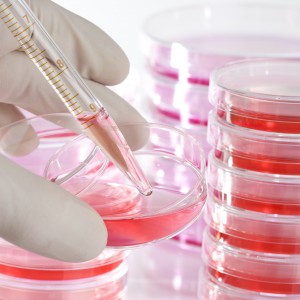 According to the Biophysical Society, a team of researchers from Soroka University Medical Center and Ben Gurion University of the Negev in Israel, found that a peptide molecule, called humanin, is able to stop cellular death.
According to the Biophysical Society, a team of researchers from Soroka University Medical Center and Ben Gurion University of the Negev in Israel, found that a peptide molecule, called humanin, is able to stop cellular death.
Traumatic brain injuries, heart attacks and strokes all have common pathologies that result in a similar outcome of cell death and injury due to hypoxia (lack of oxygen). In these particular conditions, lack of blood supply to the injured tissues triggers a signaling pathway that causes an end in energy production (ATP). Cells without ATP eventually die. This process of forced cell death is called necrosis.
Humanin corresponds to a peptide encoded in the mitochondrial genome which has been suggested to have neuroprotective and cytoprotective activities in disease models of Alzheimer’s, Huntington’s and also in models of stroke. Researchers now propose the use of derivatives of humanin to stop necrosis in injured tissues.
“The present findings could provide a new lead compound for the development of drug therapies for necrosis-related diseases such as traumatic brain injury, stroke and myocardial infarction — conditions for which no effective drug-based treatments are currently available [that work by blocking necrosis],” said Dr. Abraham Parola, professor at Ben Gurion University of the Negev in a news release.
“A recent paper published by our group suggested the involvement of cardiolipin [a phospholipid in inner mitochondrial membranes] in the necrotic process,” said Dr. Parola. “During this work we stumbled along humanin and were intrigued by its anti-apoptotic effect, and extended it to anti-necrotic effect.”
Researchers found that humanin derivatives can block necrosis by reversing the decrease in ATP levels. Two humanin analogues – AGA(C8R)-HNG17 and AGA-HNG – were tested by treating neuronal cells before they were exposed to a necrotic agent. The results showed that humanin analogues were effective in blocking necrosis in these cells.
Studies were also conducted in mice with traumatic brain injuries. The HNG17 analogue was given to these animals resulting in a reduction of mice neurological motor impairment.
Researchers suggest that an optimal treatment for necrosis may include a drug delivery system containing the HNG17 analogue. One of the team’s next goals is to focus on a possible combination of humanin with other anti-necrotic agents to increase its therapeutic potential.


